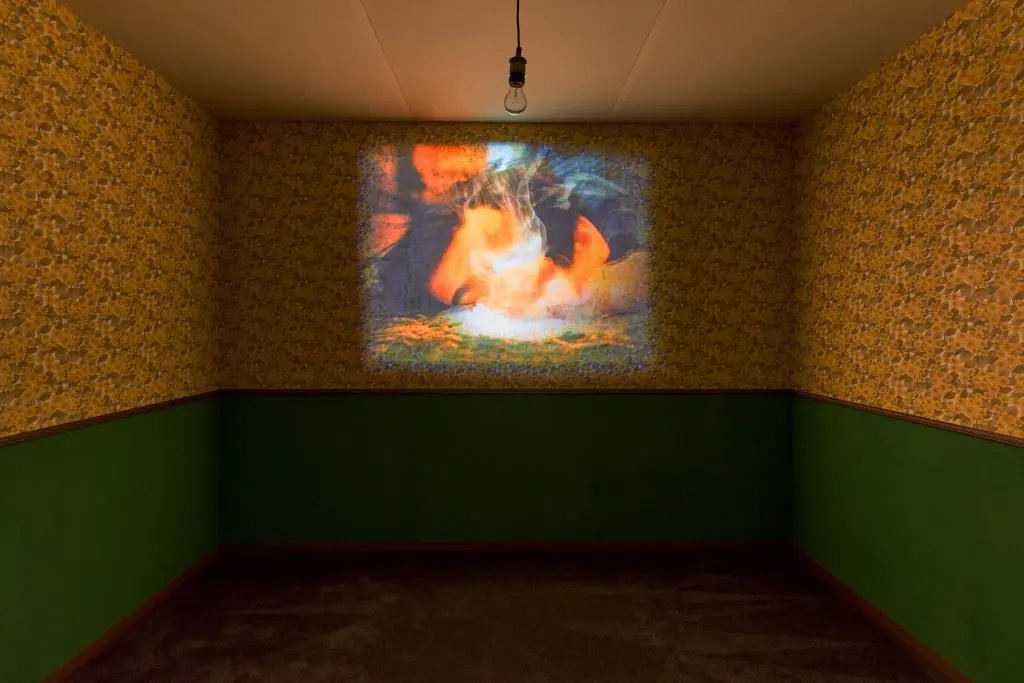

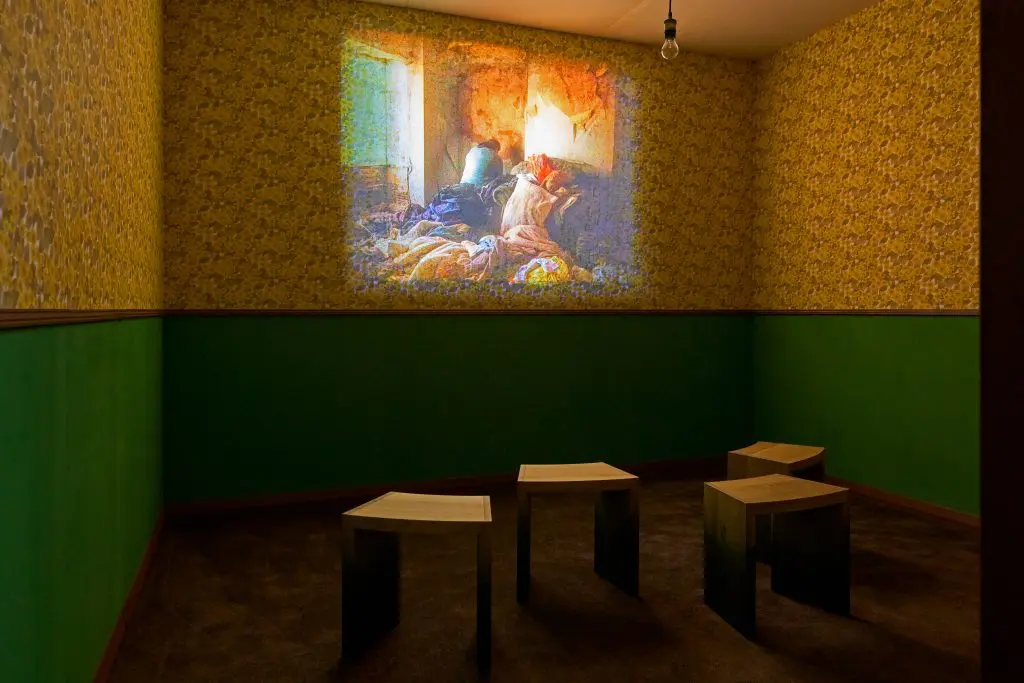

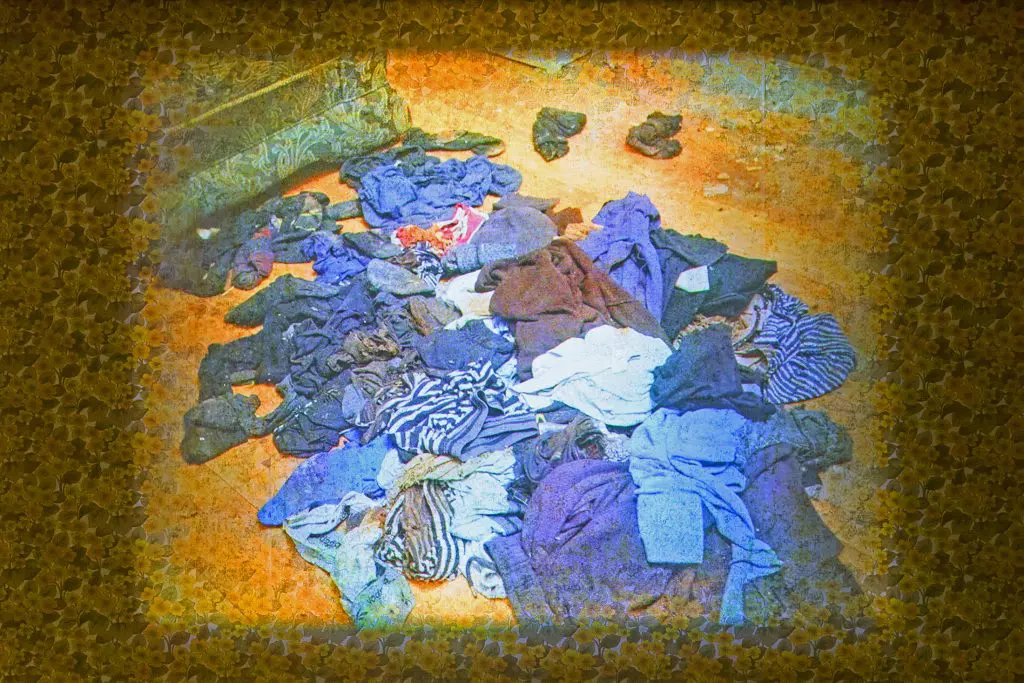
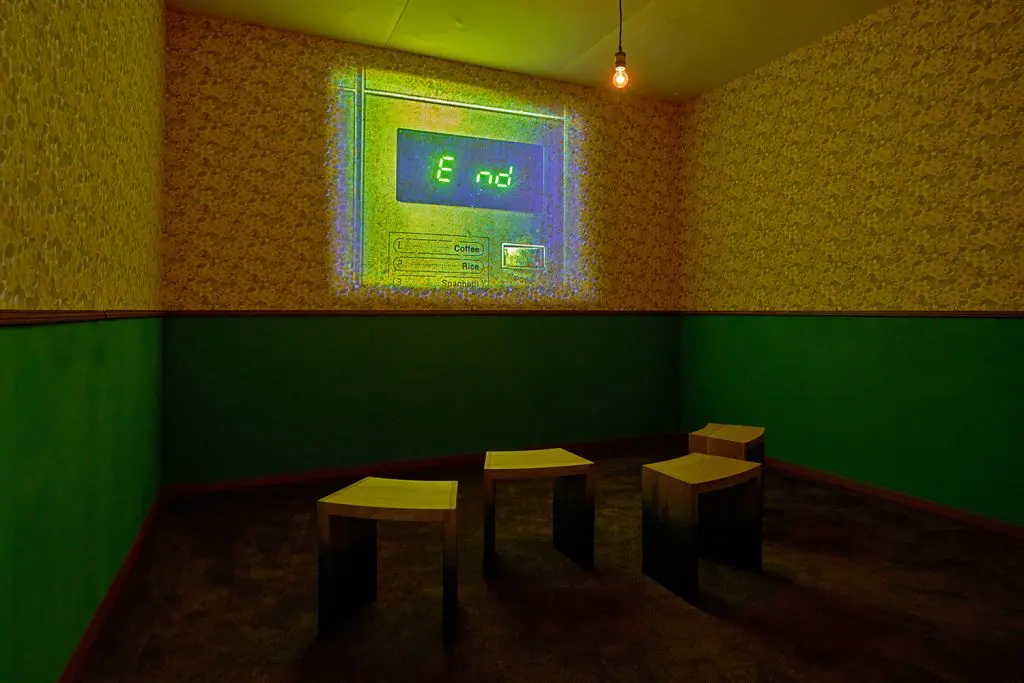
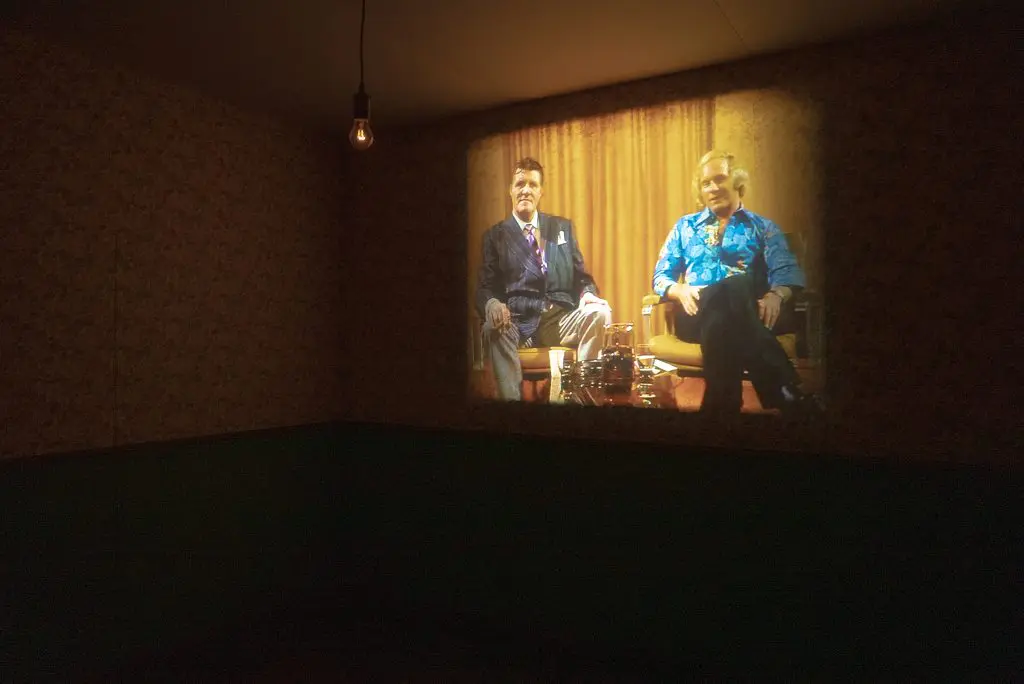
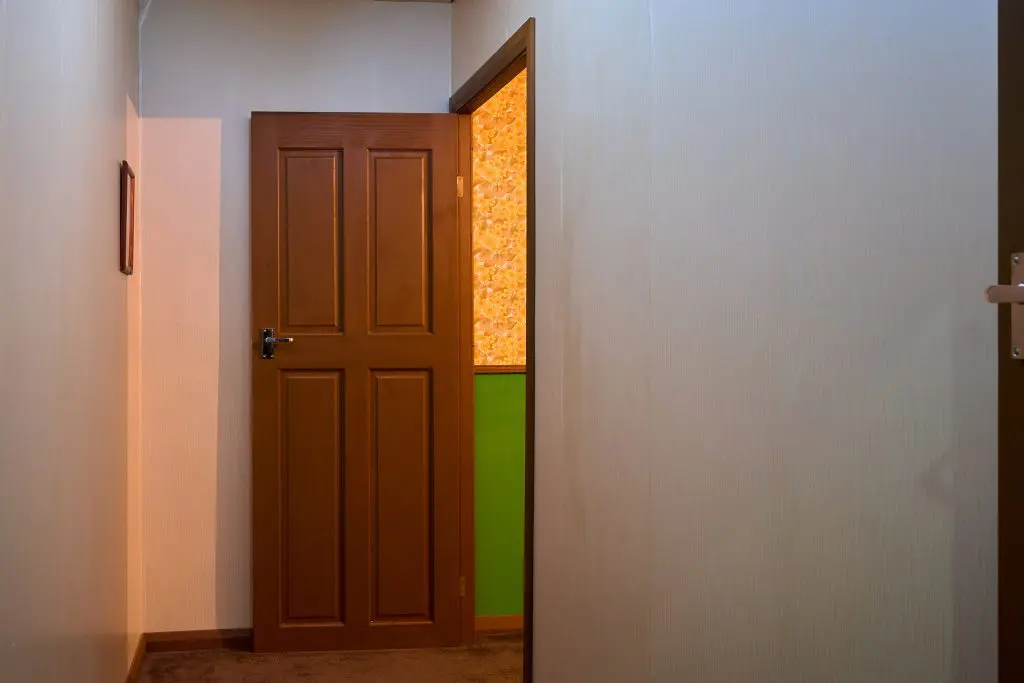
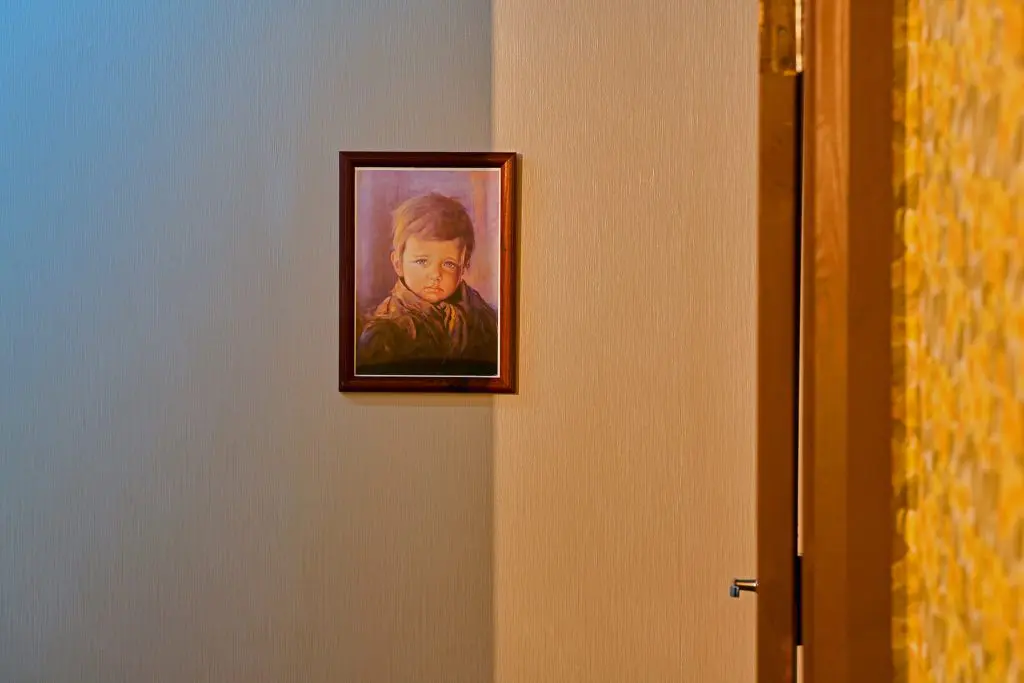
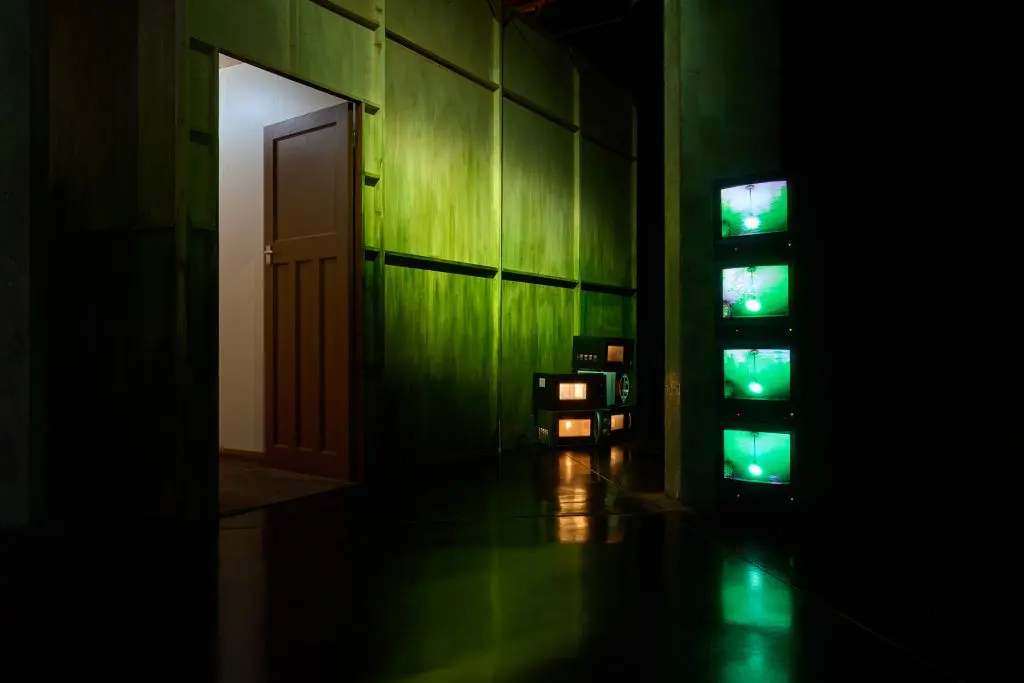


Solo exhibition
FACT Liverpool , 2025
We enter the world of Burnt Toast through a recreated stage set influenced by the main character's home. At once familiar yet unsettling, Helen Anna Flanagan uses the idea of a haunted house, a space where forgotten spirits dwell, to draw attention to people often overlooked and marginalised in society.
Burnt Toast is a contemporary ghost story that resurrects comedian and magician Tommy Cooper, a TV personality who famously died on stage during a live performance in 1984. The film follows Phil, a trained impersonator of Tommy, who is now unemployed and struggling with his mental health. Trapped in a decaying home and haunted by his past, Phil’s story allows Helen to explore the consequences of not meeting societal expectations.
Much of how we understand ourselves and others is shaped by how we build our identities—as individuals and as members of a larger group. This process occurs within broader systems, such as culture and class. In Burnt Toast, as Phil increasingly loses touch with reality, he describes his whole life as "one failed magic trick". The film highlights how fragile identity can be, particularly for those who do not conform to the roles defined by a capitalist society. For individuals who do not fit in or who slip through the cracks, this can lead to isolation and a lack of support.
Both the film and installation draw on cultural references that utilise domestic spaces to comment on contemporary social issues. Writer J.G. Ballard used architecture to critique urban social life, while Charlotte Perkins Gilman's The Yellow Wallpaper uses a domestic setting to explore themes of entrapment and mental deterioration. Similarly, Helen's work connects the idea of home with social isolation and mental health, examining the impact of broader societal structures on our lives and our place within society.
Text by Charlotte Horn
Supported by:
- Fact Liverpool, Mondriaan Fonds, Embassy of the Kingdom of the Netherlands